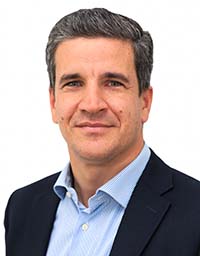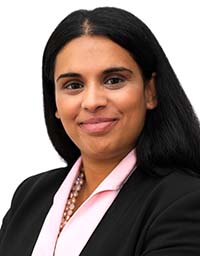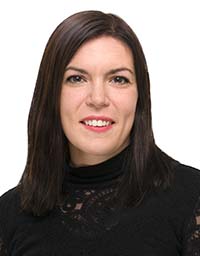As regulatory demands proliferate, fund and asset managers are finding that reporting on everything from sustainability to technical standards is a growing burden on their time and resources. Legal firm Zeidler Group believes digital services are the solution.
The burden of reporting requirements on fund managers has never seemed so daunting. From Key Investor Information Documents (KIIDs) to the European MiFID Template (EMT) and the ongoing evolution of the European Banking Authority’s Regulatory Technical Standards (RTS), the list of reporting obligations can appear overwhelming.
In the last two years, the list has lengthened further as the rising importance of ESG reporting has added SFDR (Sustainable Finance Disclosure Regulations) and the European ESG Template.
Many of these reporting obligations serve valuable purposes, not least international standardisation for distribution and validation of the standards – particular in ESG-related issues – that investors are increasingly demanding. Nevertheless, the burden is real.
Can digital solutions lighten the load?
The array of reporting requirements, amendments and deadlines is a challenge that almost seems designed for a technological solution and digital legal firm Zeidler Group is convinced that digital innovation is the way forward.
 Valentin Chantereau (pictured right), Head of Zeidler’s Legal Services Division argues that the skills of legal counsel and regulatory reporting should ideally sit side by side and be integrated with tech solutions. “I know a lot of law firms that may be pretty good at doing their job on the pure legal front and you also have some consultancy firms that do reporting products. But we were pretty much the only firm that can offer 360-degree view,” says Chantereau.
Valentin Chantereau (pictured right), Head of Zeidler’s Legal Services Division argues that the skills of legal counsel and regulatory reporting should ideally sit side by side and be integrated with tech solutions. “I know a lot of law firms that may be pretty good at doing their job on the pure legal front and you also have some consultancy firms that do reporting products. But we were pretty much the only firm that can offer 360-degree view,” says Chantereau.
“We consult on a lot of topics that do not involve any document production,” he adds, “but we also have many clients that want a law firm and a reporting division in one. That’s where it becomes interesting, because that is where they get a lot of economies of scale.”
Much reporting may appear at least initially to overlap, and there are elements where data required for one reporting process can be transposed for use in another report. But there are pitfalls. Determining where such efficiencies can be achieved without inadvertently getting it wrong requires a combination of automation with legal expertise.
 Gemma Capelo (pictured left), Zeidler’s Head of Reporting Services, explains: “There are various elements that can be streamlined across the products and services offered within the Firm. We have a high-level of visibility with multiple clients using multiple services, therefore we are able to pick up on things that can make processes easier and help deliver a better service.” What is more, Capelo adds, some reporting standards can appear to be a moving target.
Gemma Capelo (pictured left), Zeidler’s Head of Reporting Services, explains: “There are various elements that can be streamlined across the products and services offered within the Firm. We have a high-level of visibility with multiple clients using multiple services, therefore we are able to pick up on things that can make processes easier and help deliver a better service.” What is more, Capelo adds, some reporting standards can appear to be a moving target.
“Take the PRIIPs Regulatory Technical Standards for example,” she says. “There have been numerous updates or amendments to it and various deadlines and implementation dates have been changed. So, the initial difficulty for document providers as well as the managers themselves is the level of uncertainty.”
The European ESG Template (EET) is another example, as Elisa Forletta-Fehrenberg (pictured below), head of ESG at Zeidler explains.
“The official version of the EET went through several iterations and it is now being used in the market since June 1. It is not straightforward in that it has about 500 to 600 fields that need to be filled in. Only 44 are mandatory at the moment, but it becomes complex with the additional data in relation to the funds: whether they consider principal adverse impacts, whether they have specific strategies and so on.”
 “The date by which this is needed is the 2nd of August because of the Insurance Distribution Directive and the MiFID II delegated regulation comes into force, so distributors will be asking for that information by that date. Then RTS, SFDR and the taxonomy come into force on 1st of January 2023; by then managers will be required to include a lot more details.”
“The date by which this is needed is the 2nd of August because of the Insurance Distribution Directive and the MiFID II delegated regulation comes into force, so distributors will be asking for that information by that date. Then RTS, SFDR and the taxonomy come into force on 1st of January 2023; by then managers will be required to include a lot more details.”
Professional tools for the trade
Among its various digital solutions, Zeidler Group has developed an SFDR reporting tool designed to meet the requirements of the EET and to keep pace with its evolution and the roll-out of each phase of the regulation. But Forletta-Fehrenberg says the tool is not an unchanging product – constant monitoring of ESG developments and applying the relevant legal expertise is essential to ensure the tool is always ahead of the game.
The EU is widely regarded as leading the world in the implementation of ESG reporting standards, and, as a significant market and domicile for funds, its reporting requirements are something of an informal benchmark for fund managers in other jurisdictions.
 But even so, the EU is not entirely homogenous in all regulation. The details and pace of implementation can vary from state to state and Jasminka Makovec (pictured left), head of Zeidler’s Regulatory Services Division points to the Cross-Border Distribution of Funds Directive (CBDF) as a case in point. “Different Member States have been implementing CBDF differently, or they have not implemented it yet, or they have added some of their own special requirements. So, we use tools to automate as much as possible and take these differences into account.”
But even so, the EU is not entirely homogenous in all regulation. The details and pace of implementation can vary from state to state and Jasminka Makovec (pictured left), head of Zeidler’s Regulatory Services Division points to the Cross-Border Distribution of Funds Directive (CBDF) as a case in point. “Different Member States have been implementing CBDF differently, or they have not implemented it yet, or they have added some of their own special requirements. So, we use tools to automate as much as possible and take these differences into account.”
An end to barriers and silos
To combine legal expertise with the application of reporting procedures requires the dissolution of the barriers that can grow up between divisions in any firm. Chantereau says avoiding a siloed approach is critical. But it is not just between the service providers that integration is needed. As in so many spheres of business, if the opportunities of digitisation are to be felt in the delivery to clients, digital teams, previously isolated from other operational divisions need to be involved in solutions from the outset.
“It is especially important to work on a very integrated basis. We exclusively use our own software engineers who are employed by the group. As our colleagues, the engineers get regular training in regulatory topics. They are obviously not lawyers, but the engineers know the regulatory environment extremely well. So, we have this team of software engineers with us, and we regularly hold internal conference calls where our team of lawyers, compliance specialists and software engineers collaborate together to talk about the same subject,” says Chantereau.
For more traditional lawyers, electronic automation and technology solutions may seem an anathema to their core skills of legal interpretation and analysis. But in an age of legal, ESG and regulatory reports, combining these skills and expertise under one roof – or even in a single team – may well be the only solution that will liberate fund and asset managers from the burden of reporting admin and allow them to get on with their day job.
© 2022 funds europe





